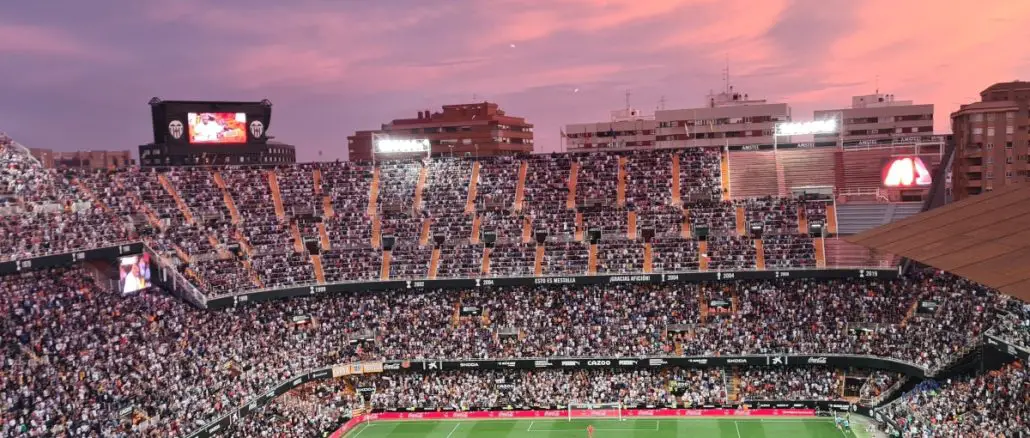
The Valencian Community is Spain’s fourth most populated region after Andalusia, Catalunya and the Community of Madrid. It boasts a lively football scene which historically was bossed by Valencia Club de Futbol.
They remain unquestionably the biggest and best-supported club, but Villarreal have been serious challengers on the pitch in recent years and have on many occasions outperformed their larger neighbours and finished above them in LaLiga.
There are also two more top-flight clubs in the region for the 2025/26 season, and we will give you the lowdown on football in the Comunidad Valenciana below, plus some tips for getting around and doing things away from football in one of Spain’s most popular regions for travel.
Valencian Community football map
The Valencian Community is predominantly a coastal region and all the main clubs are in towns or cities either on, or very close to, the shores of the Mediterranean Sea. The locations of the seven Valencian clubs that are in the top three tiers as of 2025/26 are featured in the map above.
The northernmost sides are near-neighbours Villarreal and Castellon. Villarreal are much the more successful club these days, but Castellon de la Plana is actually more than three times larger than the small city of Vila-real and is the capital of the province of Castellon.
Heading south, the second province is Valencia, home to the city of Valencia which is the location of two top-flight clubs – Valencia CF and Levante.
Finally, the southernmost province in the Valencian Community is that of Alicante. Hercules, from the city of Alicante and neighbouring Elche are the big two, although they are currently separated by two tiers. Eldense are also located in the area and they’ll be with Hercules in the 2025/26 Primera Federacion (third tier).
Valencian Community clubs
City of Valencia football teams
Valencia

Stadium – Mestalla
Capacity – 49,430
Nearest station – Arago (Valencia Metro)
Valencia are the region’s biggest club and having been crowned Spanish champions six times, they are the fifth most successful side in the country. The centrally-located Mestalla is one of Spain’s most iconic football stadiums and has been home to Valencia for more than a century now. With some incredibly steep stands, there is a real sensation that you are on top of the pitch and it boasts one of the best atmospheres in Spain, although much of the noise is currently directed in anger against the club’s unpopular owners!
Los Che should in fact have left the stadium well over a decade ago, but construction of the Nou Mestalla was delayed for many years, before restarting in 2025. The club are hoping to move to their new home, which is located around 5 km northwest of their current one, in 2027.
How to buy tickets for Valencia matches:
Valencia are a well-supported club, but they aren’t the force they once were, and obtaining tickets for the majority of their matches shouldn’t be a big problem. Tickets can be purchased online from the Valencia website. They also offer stadium tours, with adult tour tickets costing €15.30.
Levante
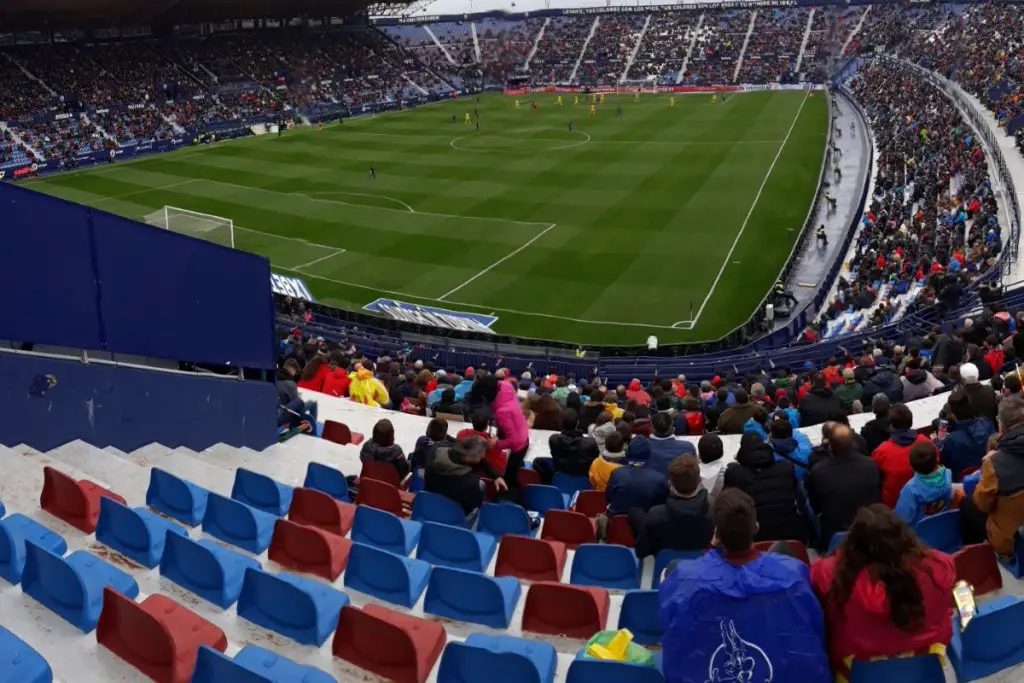
Stadium – Estadi Ciutat de Valencia
Capacity – 26,354
Nearest station – Machado (Valencia metro)
The two Valencia clubs are the closest LaLiga neighbours and it would only take a little over half an hour to walk from the Mestalla to the Estadi Ciutat de València. Levante are actually the older of the two clubs in the city having initially been formed ten years prior to their neighbours, although they did merge with Gimnastico FC after their stadium was destroyed during the Spanish Civil War.
Despite the proximity, the Valencia derby was historically a rarely played fixture, with Levante spending just two seasons in the top flight in all of the 20th Century. In recent years, they’ve enjoyed one of the best periods in their history, and were promoted back to LaLiga again in 2025.
How to buy tickets for Levante matches:
Visiting the Estadi Ciutat de València is overall quite a pleasant matchday experience and Levante are a family club who have built up quite a large number of season ticket holders in recent years, although they remain very much Valencia’s little brother.
Matchday tickets are affordable and can be purchased via their website. Demand may increase this season following their promotion, but there should still be decent availability for most fixtures, although more glamorous games will see prices rise significantly as is the norm across LaLiga.
Elsewhere in the Valencian region
Villarreal
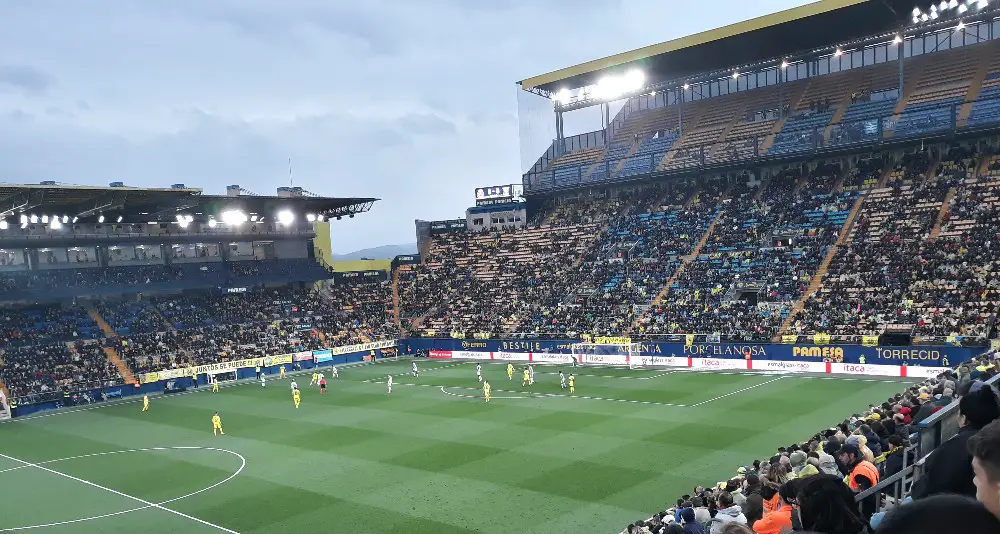
Stadium – Estadi de la Ceramica
Capacity – 23,500
Nearest station – Vila-real train station
Vila-real is a small and in truth quite a strange town with very little going on besides a football club that was transformed by the takeover of Spanish billionaire Fernando Roig in 1997.
They’d never even played in the top tier at that point, but have since grown to become a genuine force in Spanish and even European football with one of the best youth academies around key to their growth. The Yellow Submarine even managed to win the Europa League under Unai Emery in 2021.
They play at the Estadi de la Ceramica, formerly known as El Madrigal, which has a capacity to hold 50% of the town’s population. It’s located on the other side of town to the train station, but it will still only take you around 20 minutes to get there by foot. If you come for an evening game, be sure to check when the last train or bus out leaves, as there’s very little in the way of accommodation in Vila-real itself, with Valencia or a nearby coastal resort such as Benicassim a better base.
How to buy tickets for Villarreal matches:
Given this isn’t exactly a town to hang around in and given it will take some travel to reach, your best bet is to buy tickets in advance online via the Villarreal website to avoid any disappointment or wasted journeys.
Getting tickets for LaLiga games should not be a major issue, but there may be greater demand for Champions League fixtures with the club back in Europe’s elite competition for 2025/26. If matches sell out, you may still be able to find seats on resale websites like Hellotickets, although any third-party purchases are made at your own risk.
Elche

Stadium – Estadio Manuel Martinez Valero
Capacity – 31,388
Nearest station – Elx Parc train station
The Estadio Manuel Martinez Valero is the second-largest stadium in the Valencian region and it has previously hosted everything from Copa del Rey finals to Spanish national team games.
Elche is a reasonably large city that will be home to top-flight football again the 2025/26 season after they finished as runners-up to Levante in the Segunda Division. This will be only their sixth campaign in LaLiga since the turn of the century, and you have to go back to the 1970s for their last top-half finish in the highest tier.
How to buy tickets for Elche matches:
Elche tickets can be bought online and despite the buzz of their promotion, it’s unlikely that many LaLiga matches will sell out given the large capacity of the Manuel Martinez Valero.
Note that the stadium is located around 3 km from the historic centre and nearby palm grove which is what really sets the city apart from others in Spain. You will most likely need to take a bus or taxi from the train or bus station, unless you fancy the 40-minute walk.
The best of the rest
The only Valencian football club in the 2025/26 Segunda Division is Castellon. They are based in a town of the same name, adjacent to Vila-real and they have previously appeared in the top flight on 11 occasions.
However, you have to go back to 1990/91 for their last LaLiga campaign and the emergence of a new Spanish football power in the shape of Villarreal right on their doorstep has made it tough for them in recent years, although they are still well backed by a passionate fanbase at the Nou Estadi Castalia.
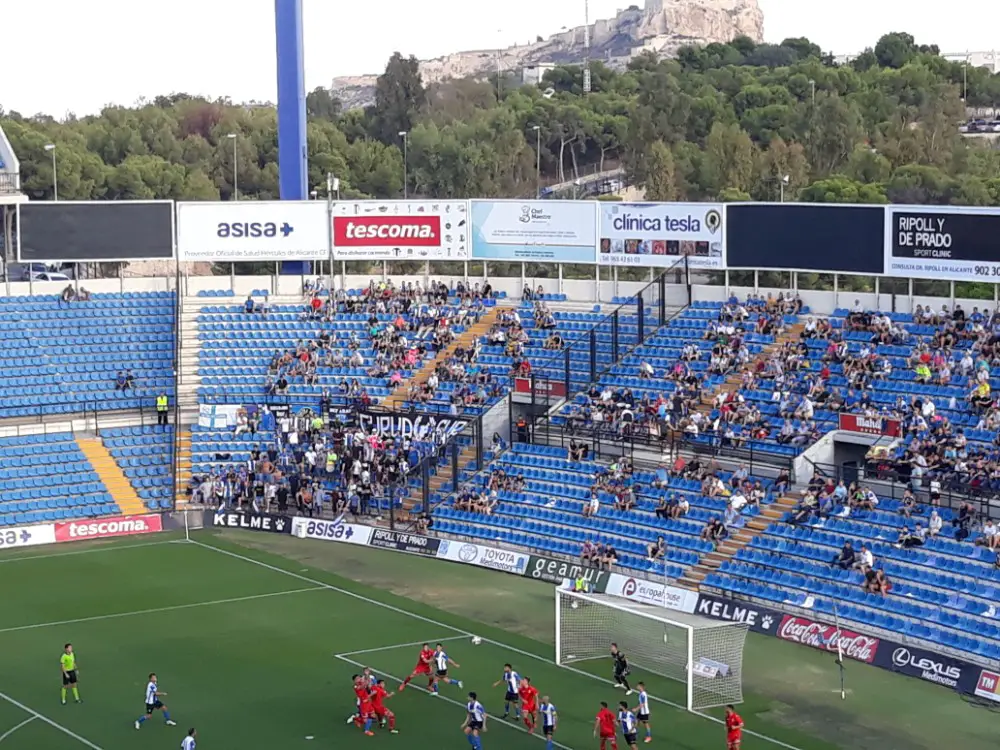
Heading down to Primera Federacion and you’ll find Hercules, with the Estadio Jose Rico Perez offering great views of Alicante’s Santa Barbara Castle. Their home, one of the most notable Spanish stadiums outside of the top two leagues, is too big for their current needs in truth, but with a population of around 350,000, the city is big enough for the club to aspire to greater things. However, you have to go back to 2013/14 for the last time they even appeared in the Segunda Division.
Nearby Eldense did play in the Segunda Division for two seasons between 2023 and 2025, but have since been relegated back to the third tier. They play at the 5,776-capacity Nuevo Pepico Amat, while Villarreal’s B team will also be in the Primera Federacion for 2025/26.
Heading down to the Segunda Federacion (fourth tier) and you can find Valencian clubs Alcoyano, Intercity, Orihuela and Torrent.
Groundhopping in the Valencian region – Getting around
Using the Spanish rail network will be the best bet for most people with almost all of these clubs lying on or close to the coastal line which runs from Barcelona all the way down to Alicante. Head to Renfe.com to find timetables and book tickets which you can download to your mobile. It’s advisable to do this in advance when possible as fares rise closer to the day of travel on the longer routes, and some trains may sell out.
Train tickets within the Valencian Community are mostly affordable. From Valencia to Vila-real, it takes roughly an hour by rail on the fastest trains which can cost as little as €5-6.
Castellon (AKA Castello de la Plana) is slightly further, but it is served by trains on the faster line to Barcelona, which means it only takes around 45 minutes to get there from Valencia by rail. The football clubs in both Villarreal and Castellon are only around a twenty-minute walk from the respective train stations.

Alicante and Elche are neighbouring cities, about 150 km south of Valencia. It takes roughly two hours to get from Valencia to Alicante with bus and rail connections. At the time of writing, there are only three daily direct trains from Valencia to Elche, and buses are usually faster on that route (use Alsa to search for bus tickets and times). Buses and trains from Alicante to Elche take around 30 minutes.
Getting around the city of Valencia is best done by metro or on foot in truth, with both clubs within walking distance of the city centre. There is also an excellent cycling scheme in the city which visitors can take advantage of.
Be aware though that neither the Valencia metro, nor the tram in Alicante have services that are as frequent as you find in major cities such as Barcelona or Madrid, so you may find yourself waiting longer for a connection, particularly at non-peak times.
Away from the football
This is one of Spain’s most-visited regions and for good reason. The Valencian Community is home to 350 km of coastline and its beaches are blessed with better weather than you find on Spain’s north coast for example. Whether you’re looking for a resort holiday or a more authentic Valencian experience, you are spoiled for choice in terms of beaches in which to base yourself, with the area around Alicante perhaps your best bet.
In terms of the cities, there’s a little bit of history in Elche, but Alicante and Valencia are the most interesting to visit. They also have the largest airports so if you’re coming for a groundhopping weekend, you’re almost certainly best basing yourself in one or the other, most likely Valencia given it has much more to offer from a football perspective, although Alicante has better flight connections.
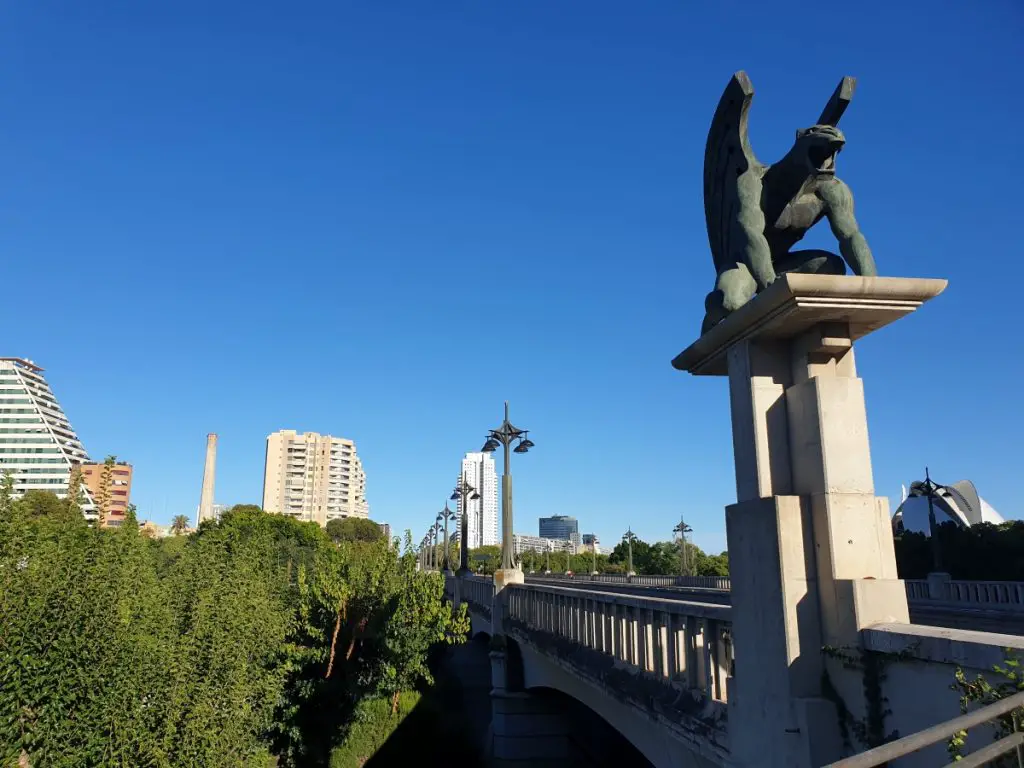
Valencia has plenty to see and do, with its old river bed having been spectacularly converted into a lush park complete with many attractions including the impressive City of Arts and Sciences, as well as one of the world’s best aquariums. The city also has a decent beach and port area, and is famous for its cuisine with the Valencian region the birthplace of Paella. If you visit in March, you may be able to catch Las Fallas – one of Spain’s best festivals.
Alicante is another really nice city and in contrast to the resorts to the north such as Benidorm, it still retains a local flavour. The castle of Santa Barbara is one of the largest ancient forts in Spain and looms large over the city. Meanwhile, the spacious 7 km long San Juan Beach and nearby El Campello can easily be reached by tram from the city centre.

